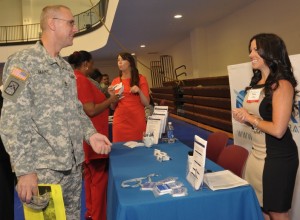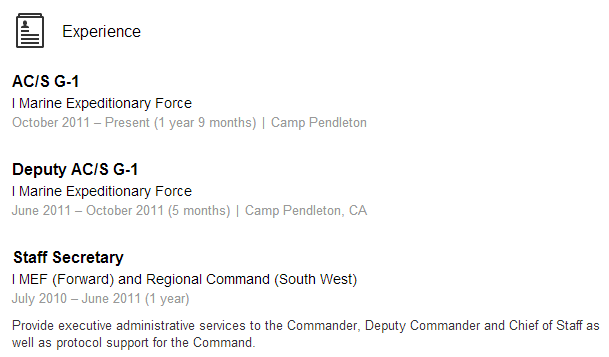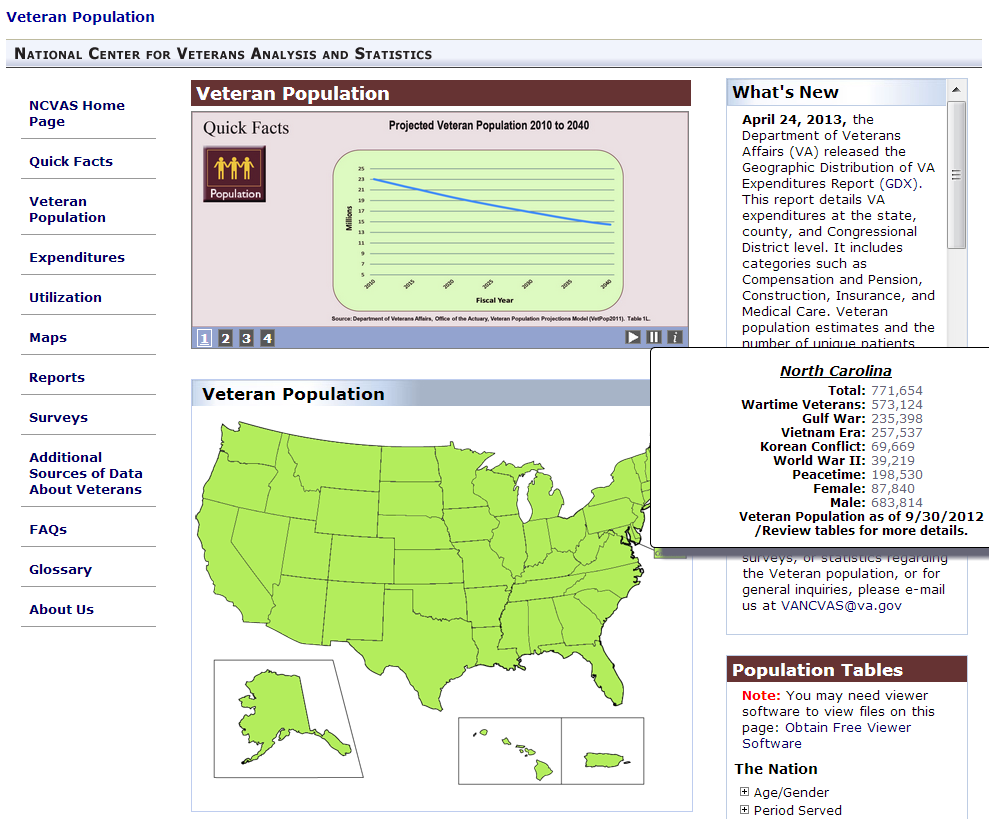 In a similar vein to my recent diversity sourcing article, I wanted to create a resource for people looking to effectively search for and identify military veterans for recruiting.
In a similar vein to my recent diversity sourcing article, I wanted to create a resource for people looking to effectively search for and identify military veterans for recruiting.
While this posts focuses on the U.S. armed forces, I encourage folks from other countries to create and distribute similar searches to identify their own military veterans.
If you’re interested in all of the great things you can do for employer branding and talent attraction strategies for hiring veterans – you won’t find it here, because this post strictly focuses on the proactive online sourcing and identification of people who are either currently serving in or are veterans of the U.S. armed forces.
Read on to review:
- An extensive military/veteran Boolean search I’ve constructed for use on LinkedIn, Monster, CareerBuilder, Dice, Indeed, your ATS, etc.
- Veteran population information and resources
Veteran Sourcing Boolean Search String
(Army OR USAR OR “U.S.A.R.” OR “Army Reserve” OR “Army Reserves” OR Navy OR USN OR USNR OR “U.S.N.” OR “U.S.N.R.” OR “Naval Reserves” OR “Naval Reserve” OR “Air Force” OR USAF OR “U.S.A.F.” OR USFAR OR “U.S.A.F.R.” OR “Force Reserve” OR “Force Reserves” OR “Forces Reserve” OR “Forces Reserves” OR Marines OR “Marine Corp” OR “Marine Corps” OR USMC OR “U.S.M.C.” OR USMCR OR “U.S.M.C.R.” OR MARFORRES OR “Marine Expeditionary Force” OR MEF OR “Coast Guard” OR USCG OR “U.S.C.G.” OR USCGR OR “National Guard” OR Veteran OR “honorable discharge” OR “honorably discharged”)
Example Results
- 3.5M+ on LinkedIn (see 3 searches below)
- 1.8M+ resumes on Indeed
Search Notes
- The search is 570 characters, including spaces
- While LinkedIn used to accept searches that large, things have changed recently. I’ve found I needed to split it into 3 separate searches to get them to run properly. For example:
- Army OR USAR OR “U.S.A.R.” OR “Army Reserve” OR “Army Reserves” OR Navy OR USN OR USNR OR “U.S.N.” OR “U.S.N.R.” OR “Naval Reserves” OR “Naval Reserve” – 2,000,000+ results in the U.S.
- “Air Force” OR USAF OR “U.S.A.F.” OR USFAR OR “U.S.A.F.R.” OR “Force Reserve” OR “Force Reserves” OR “Forces Reserve” OR “Forces Reserves” OR Marines OR “Marine Corp” OR “Marine Corps” OR USMC OR “U.S.M.C.” OR USMCR OR “U.S.M.C.R.” OR MARFORRES OR “Marine Expeditionary Force” OR MEF – 1,340,000+ results in the U.S.
- “Coast Guard” OR USCG OR “U.S.C.G.” OR USCGR OR “National Guard” OR Veteran OR “honorable discharge” OR “honorably discharged” – 376,000+ results in the U.S.
- You will likely have to split my veteran sourcing search string into 2-3 separate searches for use in ATS’s and resume databases (Monster, CareerBuilder, Dice, etc.) so you can add your other search criteria
- You can condense the search somewhat when adapting it to search engines that support stemming/root word search (e.g., major resume databases and some ATS’s)
- While LinkedIn used to accept searches that large, things have changed recently. I’ve found I needed to split it into 3 separate searches to get them to run properly. For example:
- Watch your quotation marks!
- It’s best if you click one of the links above and grab the Boolean string from LinkedIn or Indeed, as my blog changes straight quotes to curved quotes, which can cause problems if you simply try to copy and paste the search above
- This search will find folks who are currently in the military as well as veterans, but for many of you who focus on hiring veterans, you know this can be of value in terms of building a talent community, pipelining potential talent, and of course for referral opportunities
- Don’t forget to search outside of the U.S. if your opportunities enable you to do so
- You may want to consider adding something like (“US” OR “U.S.” OR “United States”) to your search in other countries to decrease the amount of non-U.S. armed forces false positives
- You will encounter false positives
- For example, this search will return results of recruiters who are not veterans but mention the fact that they recruit veterans from the various U.S. armed forces, as well as people who say “veteran” in a non-armed forces reference, etc. You can try to eliminate the false positives, but I strongly caution you against it, as you will also exclude actual veterans (e.g., veterans who have been recruiters, people who say “Gulf War Veteran” but don’t mention any branch of the armed forces on their LinkedIn profiles, etc.). Always remember – false positives are normal, understandable and acceptable in appropriate proportions (small percentages)
- You may be tempted to enter the armed forces terminology in the “company” field (current and/or past) of sites such as LinkedIn, but I have found people whose only reference to their veteran status was in their summary and/or in their honors & awards sections – you would be excluding those people
- All of the various “Forces Reserve” variants work for Naval, Air Force, and Marine Corps
- I did not get any results for “U.S.C.G.R.” that did not also mention “Coast Guard” so I did not include it. Feel free to.
- Marine Forces Reserve can also be abbreviated MFR/”M.F.R.”, but I found that returned an unacceptably high percentage of false positives
- This search is not, nor will it ever be “complete” – it can and should be continuously improved! If you have suggestions, let me know – I will be happy to update!
The Story Behind the Search
If you’re still reading this, I am hoping you’re curious to learn more about how I came up with some of the terms to use in the above search.
Although I have many veterans in my family, I am not a veteran myself, nor am I any sort of an expert in the U.S. armed forces. However, I don’t need to be in order to create a comprehensive and inclusive search for veterans.
I simply used the Agile Sourcing Methodology (of which I am the creator) – starting with a relatively simple initial query and then analyzing results, specifically looking beyond my highlighted terms to identify patterns of related and relevant terminology to incorporate into successive search iterations for increased inclusion and thus a higher quantity of relevant results.
It also helps to have an appreciation for the limitations of text retrieval, specifically with regard to human capital. While many people don’t really think too much about their search terms, I approach every search with a healthy respect for the fact that there are many ways that people can mention anything – a company, a technology, a title, and of course their armed forces experience.
For example, here is the result I stumbled across where I discovered the Marine Expeditionary Force, of which I had no prior knowledge:

After seeing this result, I added MEF and “Marine Expeditionary Force” to my search to be able to retrieve results of people who have been in the Marine Corps, but do not mention the Marine Corps, USMC, etc.
The majority of the terms that you see in the search beyond the most common and obvious came not from Internet research (I only checked 1 Wikipedia page), but from analyzing LinkedIn profiles and resumes for additional armed forces-related references and variants (e.g., Naval Reserve, MARFORRES), as well as testing educated guesses from patterns I observed (e.g., Force/Forces, Reserve/Reserves, etc.).
All Searches “Work” AND Exclude Viable Results (Real People!)
A simple search such as (Army OR Navy OR “Marine Corps” OR “Air Force”) “works” as any search with proper syntax will, and it returns 2.8M results in the U.S. on LinkedIn.
Most people would be happy with the quantity and the quality of the results they get from such a search.
However, aside from totally missing the United States Coast Guard and various National Guards and Reserves, that simple search excludes over 250,000 people who mention the U.S. armed forces on their LinkedIn profile in a way other than (Army OR Navy OR “Marine Corps” OR “Air Force”)!!!
As proof, here’s how to isolate and find nearly 290,000 of them!!!:
(USAR OR “U.S.A.R.” OR USN OR USNR OR “U.S.N.” OR “U.S.N.R.” OR “Naval Reserves” OR “Naval Reserve” OR USAF OR “U.S.A.F.” OR USFAR OR “U.S.A.F.R.” OR “Force Reserve” OR “Force Reserves” OR “Forces Reserve” OR “Forces Reserves” OR Marines OR “Marine Corp” OR USMC OR “U.S.M.C.” OR USMCR OR “U.S.M.C.R.” OR MARFORRES OR “Marine Expeditionary Force” OR MEF OR “Coast Guard” OR USCG OR “U.S.C.G.” OR USCGR OR “National Guard”) -(Army OR Navy OR “Marine Corps” OR “Air Force”)
Veteran Population Information and Resources
During the course of my research for this post, I came across several valuable resources, including the National Center for Veterans Analysis and Statistics site, which has a wealth of information on the Veteran population, including reports (e.g. the Women Veteran and Minority Veteran reports) and this interactive map of the Veteran Population:
I also found these resources to be valuable:
- Veteran Population Projections through 2040
- Department of Defense Active Duty Military Personnel by Rank/Grade
